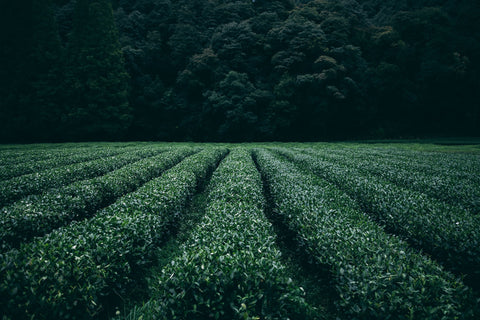News
Why people who hate green tea are probably doing it wrong November 20 2015

When I tell people that I blend tea, quite a few people have told me they hate green tea; that it's just too bitter. I try not to sound like a know-it-all-hyper-excited-about-tea-nerd and explain that this may be because of the type of tea they are using or the way they’re brewing their tea.
Here are three things you should watch out for when you brew a cup of green tea:
The quality of your tea
If you grab a pack of 50 green tea bags from the local supermarket for $2.50, the quality isn't going to be the best. That doesn't mean you need to splash out on Tieguanyin tea (a Chinese oolong selling at a cool $3,000 per kg), but a whole leaf tea will do the trick, at around $10 a pack.
Tea comes in different grades, according to the size and quality of the leaf. The stuff in those $2.50 tea bags is called ‘fannings’ or ‘dust’. Sometimes joked about (well, I hope it's a joke) is that fannings are what they sweep off the floor of the tea factory. Not ideal! The grade of tea we use at Ritual Tea Company is 'orange pekoe'; a quality, whole leaf. After you have brewed a cup of Ritual, you will notice that the dried leaves have unfurled to reveal a whole leaf. A whole leaf means you get great flavour and health benefits, without the bitterness.
The temperature of the water
The other reason green tea can taste bitter is the water. Please do not pour boiling water on your tea leaves. This burns them. For green tea, the water should be at about 80 degrees celcius. If you don’t have a kettle that boils your water to specific temperatures (yes, they exist!) then you can boil your jug and leave it to cool for a few minutes (3-5 should do the trick). Water that is just below a boil (97 degrees, to be specific), is perfect for a black tea. Green tea is more delicate than black tea, hence the difference in temperature.
How long you leave your tea to steep
Watch the amount of time you leave your tea to steep. I recommend one minute for a green tea. Anything longer means the brew can end up tasting bitter. Start taking note of the colour of your brews as well. The colour differs from tea to tea, but if you brew the same type of tea often, it can be a great indicator of whether the tea is brewed the way you like it.
Try it out and come up with a ritual that works best for you! I'd love to hear if these tips help you get the best out of your cup of tea, or if you've got any more tips.
Katie
Founder, Ritual Tea Company
